Placemaking Postcards is a blog series from the Bass Center for Transformative Placemaking at Brookings where policymakers and practitioners guest-author promising placemaking efforts from across the U.S. and abroad that foster connected, vibrant, and inclusive communities. In line with the principle tenets of placemaking, the goal of the series is to recognize the community as the expert, highlight voices from the field, and to create a community of learning and practice around transformative placemaking.
 As America rapidly diversifies, Houston has become a microcosm of the nation’s shifting demographic, cultural, and linguistic landscape. Almost one in four Houstonians was born outside the U.S., and by some counts, they speak up to 145 different languages. More than 42% of children in the metro area have at least one foreign-born parent—almost twice the national rate—and by 2050 the region is projected to be 60% Latino or Hispanic, 15% white, 15% Black, and 10% Asian American. This has prompted many to describe Houston as the country’s demographic future, pointing to the importance of diversity in fueling our nation’s growth.
As America rapidly diversifies, Houston has become a microcosm of the nation’s shifting demographic, cultural, and linguistic landscape. Almost one in four Houstonians was born outside the U.S., and by some counts, they speak up to 145 different languages. More than 42% of children in the metro area have at least one foreign-born parent—almost twice the national rate—and by 2050 the region is projected to be 60% Latino or Hispanic, 15% white, 15% Black, and 10% Asian American. This has prompted many to describe Houston as the country’s demographic future, pointing to the importance of diversity in fueling our nation’s growth.
Yet despite the promise this diversity brings to Houston, significant disparities exist that prevent everyone, particularly new immigrants and residents of color, from accessing the city’s growing prosperity. Across Houston, poverty is increasingly concentrating in specific neighborhoods, with some minority-majority areas having as many as 45% of households struggling to afford basic necessities. Houston’s schools remain segregated and language barriers prevent many new immigrants from accessing or completing education. And despite the city’s overall job growth, economic mobility remains below the national average.
Faced with this contradiction—an increasingly diverse population that remains excluded from the economic benefits it helps produce—some Houstonians are innovating with place-led strategies to address these disparities. One such strategy is underway in Houston’s Gulfton-Sharpstown neighborhood, where a community neighborhood center is acting as an anchor for service provision, skill building, education, and entertainment for underserved residents. The BakerRipley Gulfton Sharpstown Campus is part of a larger strategy led by our Houston nonprofit BakerRipley to increase access to opportunity for all Houstonians, starting with supporting and building upon the city’s most crucial asset: its diversity.
Build community first, then a community center
Gulfton-Sharpstown, the neighborhood where the center is located, is one of the most densely populated and diverse places outside of downtown—with residents from more than 80 countries, including Somalia, Afghanistan, Pakistan, and, most commonly, Mexico and parts of Central America. The neighborhood undoubtedly draws strength from this diversity, but it is often perceived by others as a “problem,” with high crime, undocumented immigrants, and low high school graduation rates.
We at BakerRipley (the nonprofit that created the center) saw something different. We have been working in the neighborhood since the early 1980s, providing early childhood education, youth programs, and immigration services. During this time, we saw a community in need of not only social services, but of a meaningful space that would value and build upon its members’ diverse strengths and assets.
In 2005, we sought to provide this space through the development of the new community center, grounded first and foremost in the desires and needs of Gulfton-Sharpston residents. We knew that for the center to be more than just four walls, it needed to be based in community input and investment. So we took an approach we use in all of our planning processes: build community first, and then build the community center.
Through a process called Appreciative Community Building—aimed at identifying the untapped assets of people and communities—we invited residents, neighbors, and other community members to shape the development of the center. Together with our partners at Project for Public Spaces and the architecture firm Concordia, we hosted more than 100 individual interviews, focus groups, and events, asking participants: What makes this community feel like home? What are some of the things you value about living here? What are the ways you are connected to this community? Who are the natural leaders?
We used what we learned to make the space a reality, ultimately transforming it into a five-building campus over four acres of land. The center is now home to multiple rentable spaces, a community garden, and social services such as after-school programs, English classes, citizenship classes, entrepreneurship programs, adult education, and computer literacy classes. The common aim across each space was to address the place-based inequities facing Gulfton-Sharpstown, and to foster socio-economic mobility through training, access to resources, and community-capacity building. In 2018, we served over 70,000 neighborhood residents.
Using flexibility and iteration to meet community needs
Since opening, we’ve learned that just creating the center was not enough to serve Gulfton-Sharpstown residents. To remain responsive to the community’s evolving needs, we have embedded two essential practices within all of their work: flexibility and iteration.
We infused these principles within the physical design of the center, the programs offered, and the process for space management. We created all of the spaces in the center—including the health clinic, charter school, event spaces, offices, and meeting rooms—to be multipurpose, and occasionally shuffle spaces such as the credit union and child care facilities to other nearby buildings to open channels of communication between local nonprofits and city services. We repeat the Appreciative Community Building process every three to four years to assess whether the center is working and responding to community needs. Finally, we remain adaptive to the larger socio-economic realities of the Houston area, responding to broader crises—homelessness, for instance—with expanding accommodation and services.
This willingness to be flexible and iterate our spaces has not only allowed us to meet the community’s changing needs, but has facilitated a sense of shared ownership over the campus itself—allowing community members to have a stake in shaping the design, process, and programs of the space.
Replicating the process for more Houstonians
In 2018, BakerRipley built off the success of the Gulfton-Sharpstown campus and opened a second campus in the East Aldine neighborhood—a community comprised mostly of second-generation Mexican Americans, many of whom are small-business owners with young families. We came there at the request of East Aldine’s state representative, but once again set out to ensure that the community itself was at the center of the design, planning, programs, and management of the space.
Through another Appreciative Community Building process, residents let their needs be known, pointing to the importance of embodying the community’s entrepreneurial spirit and providing technical educational skills for K-12 students, university students, and the neighborhood at large. For this reason, the community center now includes a fabrication lab with 3D printers, sewing machines, a woodshop, screen printing gear, and laser cutters. It strives to provide the community with resources for business incubation, workforce readiness, and education to ensure that Houston’s growing prosperity can be more widely shared across places and people.
Most Houstonians know that immigrants, people of color, women, and other diverse residents have paved the way for the city’s prosperity and success. By listening to these communities, building upon their strengths, and cultivating their assets, BakerRipley is taking important steps to ensure this success is more inclusive and just. These efforts must go far beyond the physical boundaries of our campuses, but providing communities with a place to share, learn, and take pride in is a crucial place to start.
Photo credit: BakerRipley

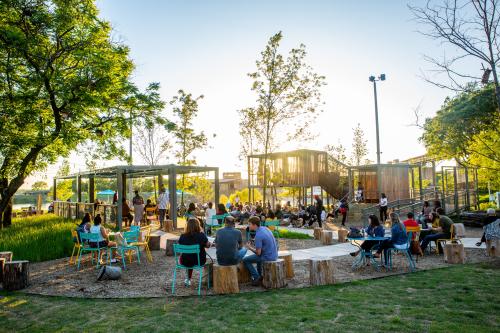
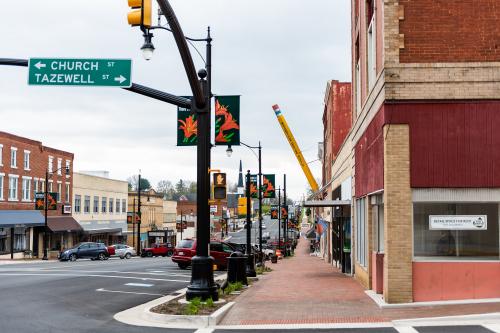
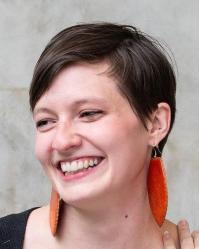
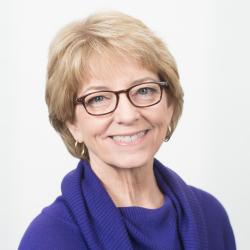

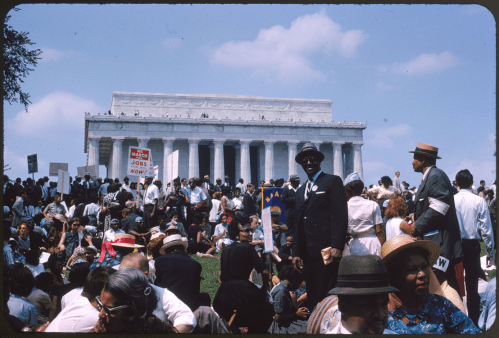
Commentary
How a Houston, Texas neighborhood center is using diversity to strengthen a neighborhood
October 4, 2019